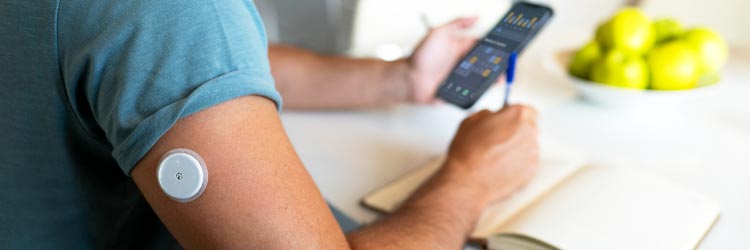Continuous Glucose Monitoring (CGM) systems represent a significant advancement in diabetes care, providing real-time insights into glucose levels throughout the day and night. This technology allows for detailed glucose trend analysis, potentially leading to better glycemic control and reduced risk of complications in patients with diabetes. For clinicians, integrating CGM into diabetes management can enhance therapeutic decisions and patient outcomes. This guide explores the benefits, implementation strategies, and practical considerations of CGM in clinical practice.
Understanding CGM Technology
CGM systems measure glucose levels at regular intervals throughout the day via a sensor typically placed subcutaneously. These devices provide dynamic glucose information, displaying data on a monitor or smartphone app, which can show both real-time glucose levels and trends. Most modern CGM systems also feature alarms to warn patients of impending hypo- or hyperglycemia, enhancing safety by enabling timely corrective actions.
Benefits of CGM in Diabetes Management
Enhanced Glycemic Control:
CGM provides detailed feedback on glucose trends, helping clinicians and patients understand the impact of lifestyle choices and medications on glucose levels. This can lead to improved treatment adjustments and enhanced glycemic control.
Reduction in Hypoglycemia:
CGM systems can alert patients to dropping glucose levels before they reach a critical point, potentially reducing the frequency and severity of hypoglycemic episodes.
Education and Behavioral Modification:
Continuous feedback from CGM can educate patients about their glucose patterns and motivate behavioral changes related to diet, exercise, and medication adherence.
Improved Quality of Life:
For many patients, CGM reduces the burden of diabetes management, offering a sense of security and control over their condition, which can significantly improve quality of life.
Implementing CGM in Clinical Practice
Patient Selection:
Ideal candidates for CGM include patients with type 1 diabetes, type 2 diabetes on intensive insulin therapy, and those struggling with frequent episodes of hypoglycemia or hypoglycemia unawareness.
CGM may also benefit pregnant women with gestational diabetes or pre-existing diabetes to achieve tight glycemic targets safely.
Education and Training:
Comprehensive education should be provided to both patients and healthcare providers. Training should cover how to install and maintain the device, interpret the data, and adjust therapy based on CGM findings.
Ongoing support and troubleshooting guidance are essential to ensure effective use of CGM.
Data Utilization:
Clinicians should incorporate CGM data into routine care, using trend information to adjust therapeutic regimens. Software platforms that assist in data analysis can be invaluable in this regard.
Discussing CGM data during patient visits can enhance understanding and engagement in their own care.
Integrating CGM with Other Technologies:
CGM can be integrated with insulin pumps for automated insulin delivery systems, commonly referred to as artificial pancreas or closed-loop systems, to optimise insulin delivery in real time.
Practical Considerations and Challenges
Cost and Reimbursement:
The cost of CGM devices and ongoing supplies can be a barrier for some patients. Clinicians need to be aware of insurance coverage and reimbursement policies which can vary widely.
Sensor Accuracy and Calibration:
While CGM sensors are generally accurate, calibration with fingerstick measurements may still be required, depending on the model. Clinicians should understand the accuracy profiles of different CGM systems.
Patient Compliance:
Continuous wear of a device can be a challenge. Addressing concerns about comfort, privacy, and the psychological impact of continuous monitoring is important.
Conclusion
Continuous Glucose Monitoring is transforming diabetes management by providing detailed insights into glucose patterns and allowing for more precise and personalized treatment plans. As this technology evolves, it becomes increasingly important for clinicians to understand how to effectively integrate CGM into their practice to maximize its benefits for patient care.

